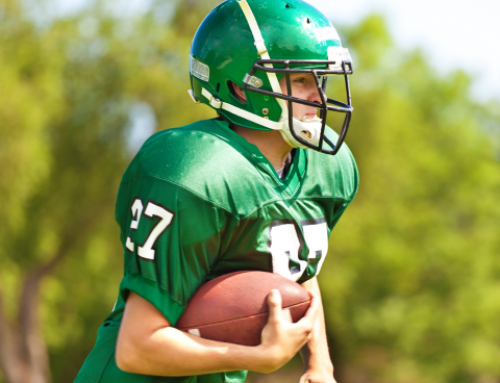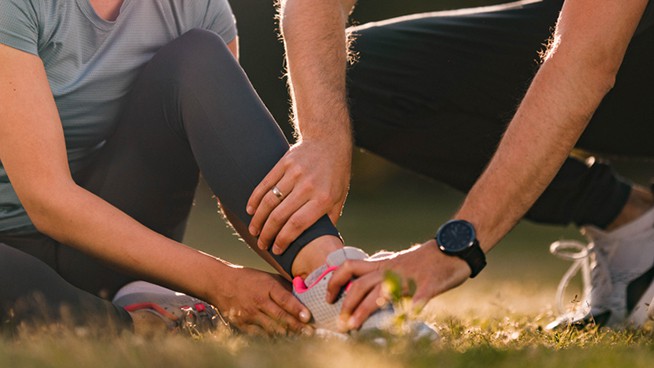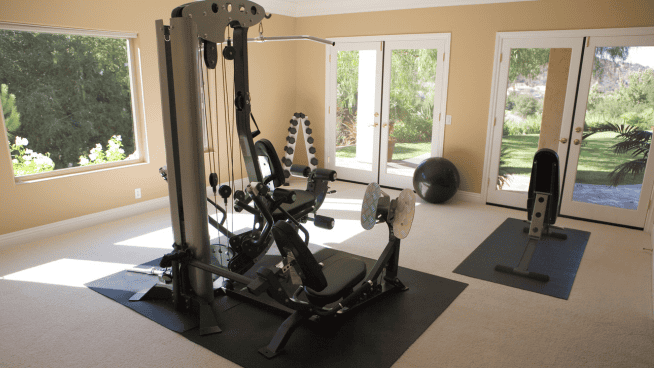Even The Best O-Line Can't Protect the Quarterback From This Injury
On the offensive line, it’s a do-or-die mission to protect the quarterback. However, there is one form of injury that the O-Line has no chance of stopping: shoulder overuse.
Quarterbacks—and other overhead-throwing athletes—are extremely susceptible. Most shoulder issues in athletes result from weakness in the posterior muscles, weakness of the core or tightness of the anterior shoulder muscles.
There are many ways to correct these problems through exercise. Because the human body operates as a single system, the TRX Suspension Trainer is the most useful tool I’ve found. It allows athletes to condition their shoulders and core together instead of individually.
Here are three efficient exercises to keep your QB pain- and injury-free. (Check out more shoulder exercises for athletes in any sport)
Scapular Retraction
This is a great exercise to teach athletes how to stabilize their arms with their shoulder girdles, keep their shoulder blades down and back and reduce the use of their trapezius muscles. In physical therapy, it is often performed in a prone (lying down) position. Using the TRX allows the core to be engaged while performing the exercise.
- Stand facing the anchor point and hold handles in front with straight arms. Make sure the straps are taut
- You can increase the resistance by moving your feet closer to the anchor point
- Pinch your shoulder blades together, as if you have a pencil between them
- Hold for 5 seconds and return to start position
Be sure to keep the shoulders down and back; do not shrug them up.
Y’s
Because it’s the opposite of the throwing motion, the Y exercise trains the muscles that normally get weak and over-stretched. It also helps with maintaining proper posture, thus reducing the chance of an impingement injury.
- Stand facing the anchor point holding the handles with straight arms. Make sure the straps are taut and that your palms are facing down
- You can increase the resistance by moving your feet closer to the anchor point
- Raise your arms up at a 45-degree angles until you reach your full shoulder flexion (forming Y overhead)
- Do not bend at the elbow
- Keep your shoulder blades down and back
W’s
This is an important exercise because it works the posterior shoulder muscles while also strengthening the external rotators. The external rotators are part of the rotator cuff, which is a commonly injured area. The stronger those small stabilizing muscles are, the less likely the shoulder will be overused or injured.
- Stand facing the anchor point holding handles with straight arms. Make sure the straps are taut and that your palms are facing down
- You can increase the resistance by moving your feet closer to the anchor point
- Pull your elbows back while simultaneously externally rotating at the shoulder until your arms form a W
Once again, be sure to keep your shoulder blades down and back.
Learn more TRX exercises by browsing through STACK’s TRX Library.
RECOMMENDED FOR YOU
Even The Best O-Line Can't Protect the Quarterback From This Injury
On the offensive line, it’s a do-or-die mission to protect the quarterback. However, there is one form of injury that the O-Line has no chance of stopping: shoulder overuse.
Quarterbacks—and other overhead-throwing athletes—are extremely susceptible. Most shoulder issues in athletes result from weakness in the posterior muscles, weakness of the core or tightness of the anterior shoulder muscles.
There are many ways to correct these problems through exercise. Because the human body operates as a single system, the TRX Suspension Trainer is the most useful tool I’ve found. It allows athletes to condition their shoulders and core together instead of individually.
Here are three efficient exercises to keep your QB pain- and injury-free. (Check out more shoulder exercises for athletes in any sport)
Scapular Retraction
This is a great exercise to teach athletes how to stabilize their arms with their shoulder girdles, keep their shoulder blades down and back and reduce the use of their trapezius muscles. In physical therapy, it is often performed in a prone (lying down) position. Using the TRX allows the core to be engaged while performing the exercise.
- Stand facing the anchor point and hold handles in front with straight arms. Make sure the straps are taut
- You can increase the resistance by moving your feet closer to the anchor point
- Pinch your shoulder blades together, as if you have a pencil between them
- Hold for 5 seconds and return to start position
Be sure to keep the shoulders down and back; do not shrug them up.
Y’s
Because it’s the opposite of the throwing motion, the Y exercise trains the muscles that normally get weak and over-stretched. It also helps with maintaining proper posture, thus reducing the chance of an impingement injury.
- Stand facing the anchor point holding the handles with straight arms. Make sure the straps are taut and that your palms are facing down
- You can increase the resistance by moving your feet closer to the anchor point
- Raise your arms up at a 45-degree angles until you reach your full shoulder flexion (forming Y overhead)
- Do not bend at the elbow
- Keep your shoulder blades down and back
W’s
This is an important exercise because it works the posterior shoulder muscles while also strengthening the external rotators. The external rotators are part of the rotator cuff, which is a commonly injured area. The stronger those small stabilizing muscles are, the less likely the shoulder will be overused or injured.
- Stand facing the anchor point holding handles with straight arms. Make sure the straps are taut and that your palms are facing down
- You can increase the resistance by moving your feet closer to the anchor point
- Pull your elbows back while simultaneously externally rotating at the shoulder until your arms form a W
Once again, be sure to keep your shoulder blades down and back.
Learn more TRX exercises by browsing through STACK’s TRX Library.











